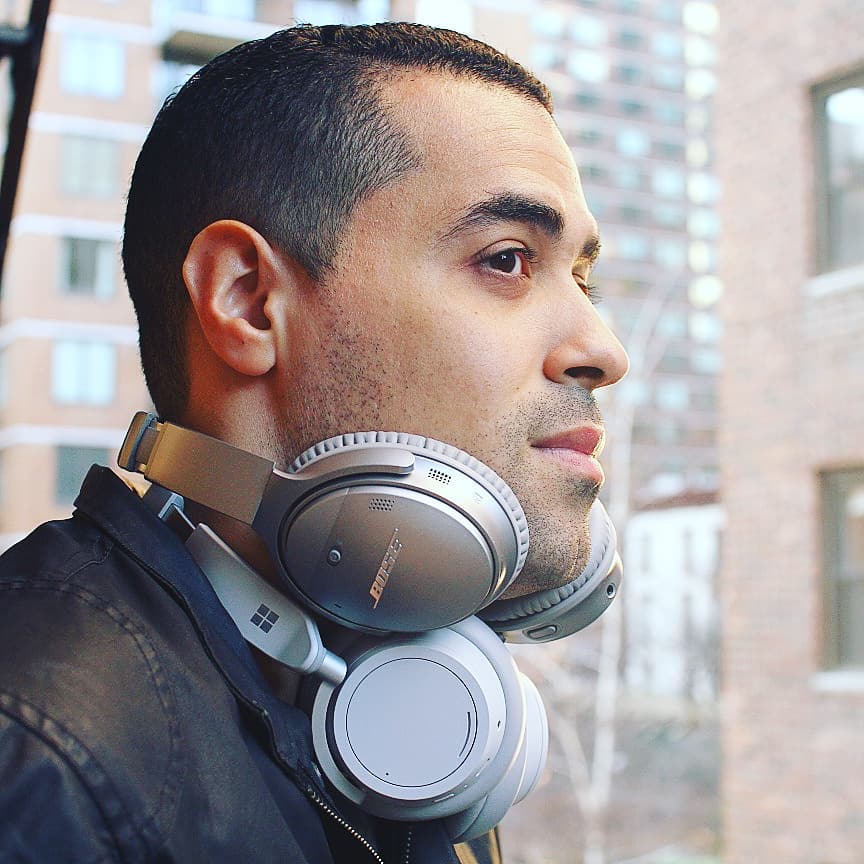Bose QuietComfort 35 II vs Sony WH-1000xM3: Face-Off
The Sony WH-1000xM3 and Bose QC 35 II deliver superb ANC, long battery life and compelling special features, but there can be only one winner.
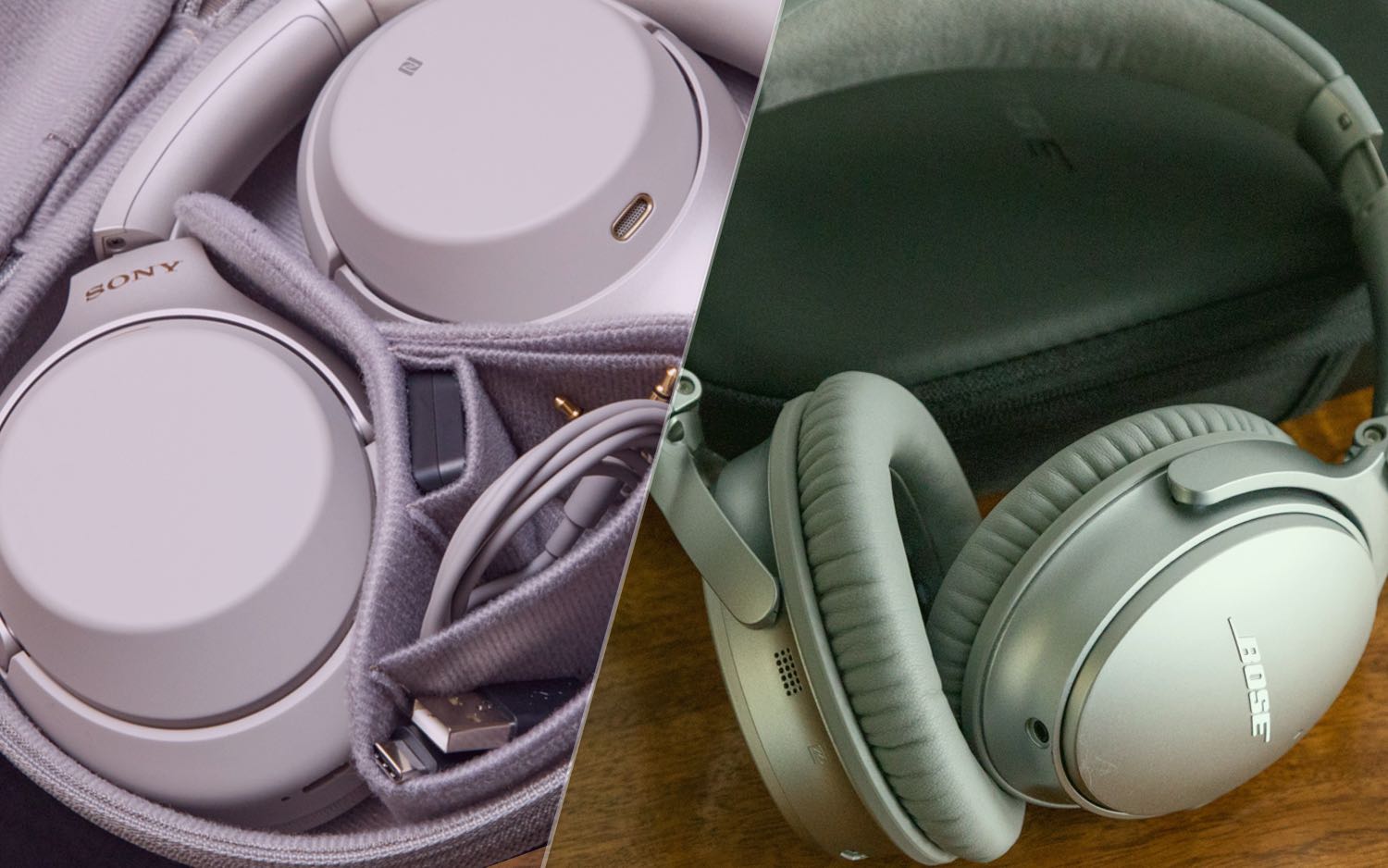
The Bose QuietComfort 35 II and the Sony WH-1000xM3 currently stand as the market's best noise-cancelling headphones, offering phenomenal quality and versatile performance at a sub-luxury price. If you're seeking an audio solution to block out your surroundings, on the ground or in the air, then owning one of these gadgets is a must.
For an in-depth look at each pair of headphones individually, take a look at our Bose QuietComfort 35 II Review or our Sony WH-1000XM3 Review. Alternatively, check out their main competitors in our ranking of the best headphones overall.
So which pair is right for you? In our Bose QuietComfort 35 II vs Sony WH-1000xM3 face-off we've pitted these two goliaths against each other to determine the real winner of the active noise-cancelling war.
QC35 II vs Sony WH-1000xM3: Specs
| Row 0 - Cell 0 | Bose QC35 II | Sony WH-1000xM3 |
| Price | $349.95 | $349.99 |
| Colors | Black and Silver | Black, Silver, Midnight Blue and Triple Midnight |
| What's In the Box | Aux cable, carrying case, micro USB cable | Aux cable, carrying case, travel adapter and USB-C cable |
| Battery Life | 20 hours (NC on); 40 hours (NC off) | 30 hours (NC on); 38 hours (NC off) |
| Size | 7.1 x 6.7 x 3.2 inches | 10.4 H x 2.9 W x 7.3 inches |
| Weight | 8.2 ounces | 9 ounces |
The Bose QuietComfort 35 IIs retain the overall aesthetics of the original QC35, but they are built from glass-filled nylon that gives them a sturdier build. The headphones' leather-padded outer headband combine with soft earpads to provide pleasant comfort for long-term listening. The reflective Bose logo on each ear cup adds flair to an already handsome pair of wireless cans.
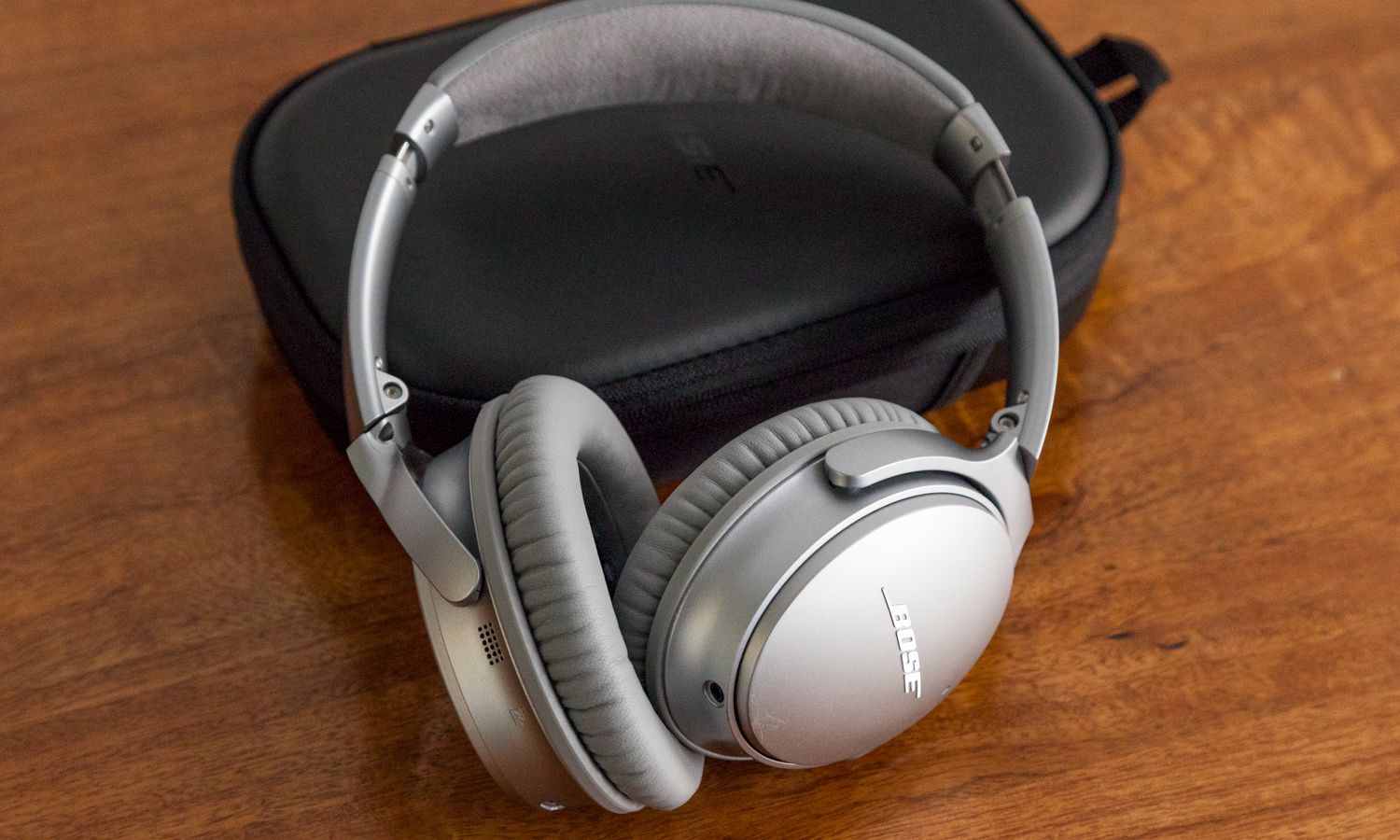
With the WH-1000xM3, Sony updated the design of its next-generation headphones, but not for the better. Removing the faux-leather earcups in exchange for a plastic shell takes away from the WH-1000xM3's premium presence and makes them prone to scuffs. Despite their clunky feel, the improved ergonomics do form a gentler fit on the ears and head. You can wear the headphones for hours and not feel fatigued. The 9-ounce WH-1000xM3 is a bit heavier than the 8.2-ounce QC35 II.
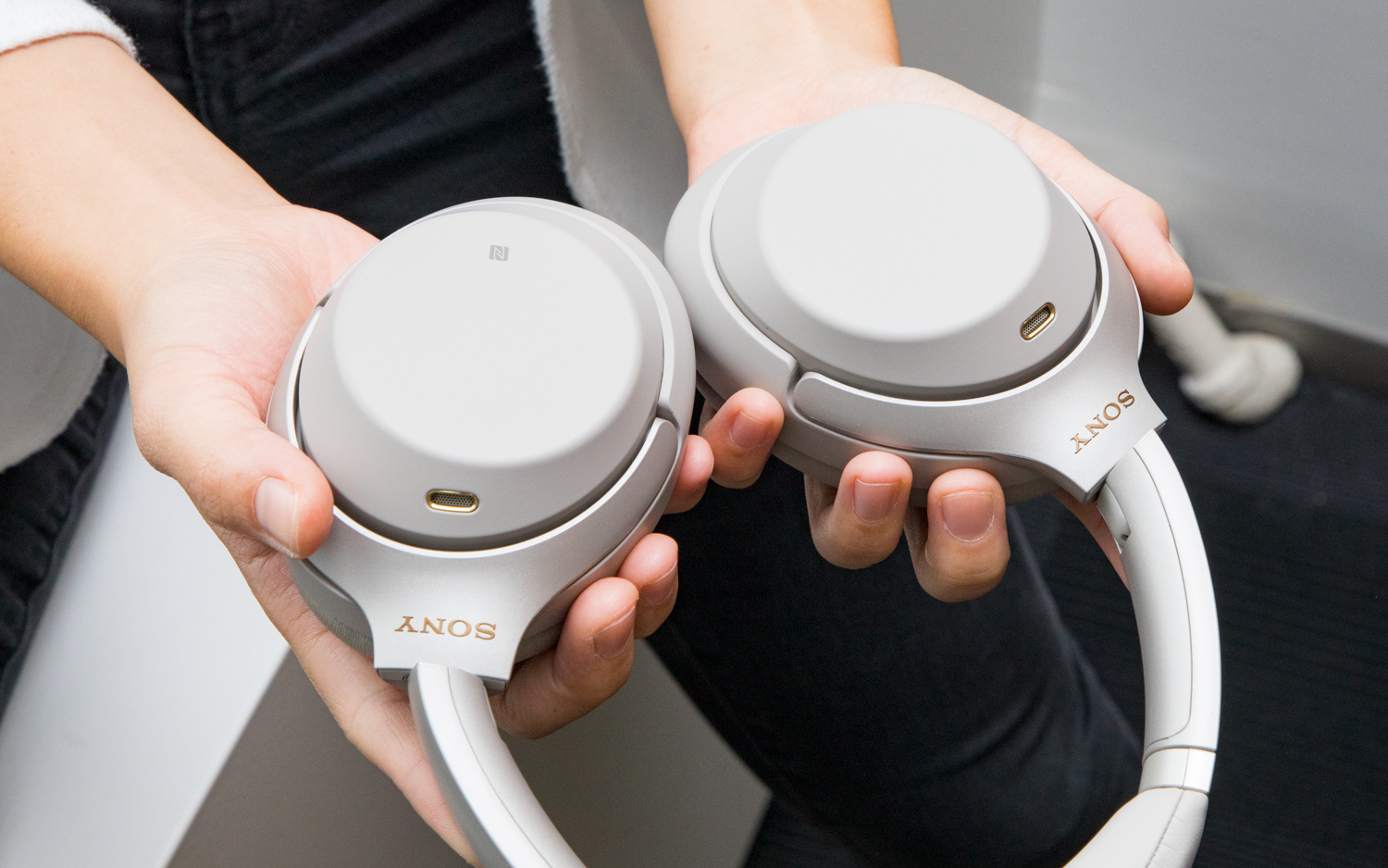
Both headphones are available in different colors, but, Bose offers more bold options: Black, Silver, Midnight Blue and Triple Midnight. You can also customize your own QC35 II's for $50 extra. The WH-1000xM3 keeps it simple with two finishes: Black and Silver.
Winner: Bose QC35 II
Bose QC 35 II vs Sony WH-1000xM3: Controls
Sometimes you just have to reward ingenuity, and that's the case with the WH-1000xM3. Its touch panel is especially responsive to swipe gestures and performs commands seamlessly. You can tap the sensor to control calls and playback, plus swipe up/down for volume, and left/right for track navigation. Two physical buttons are located below the touch panel, each assigned for listening modes and power. It doesn't get more practical than that.
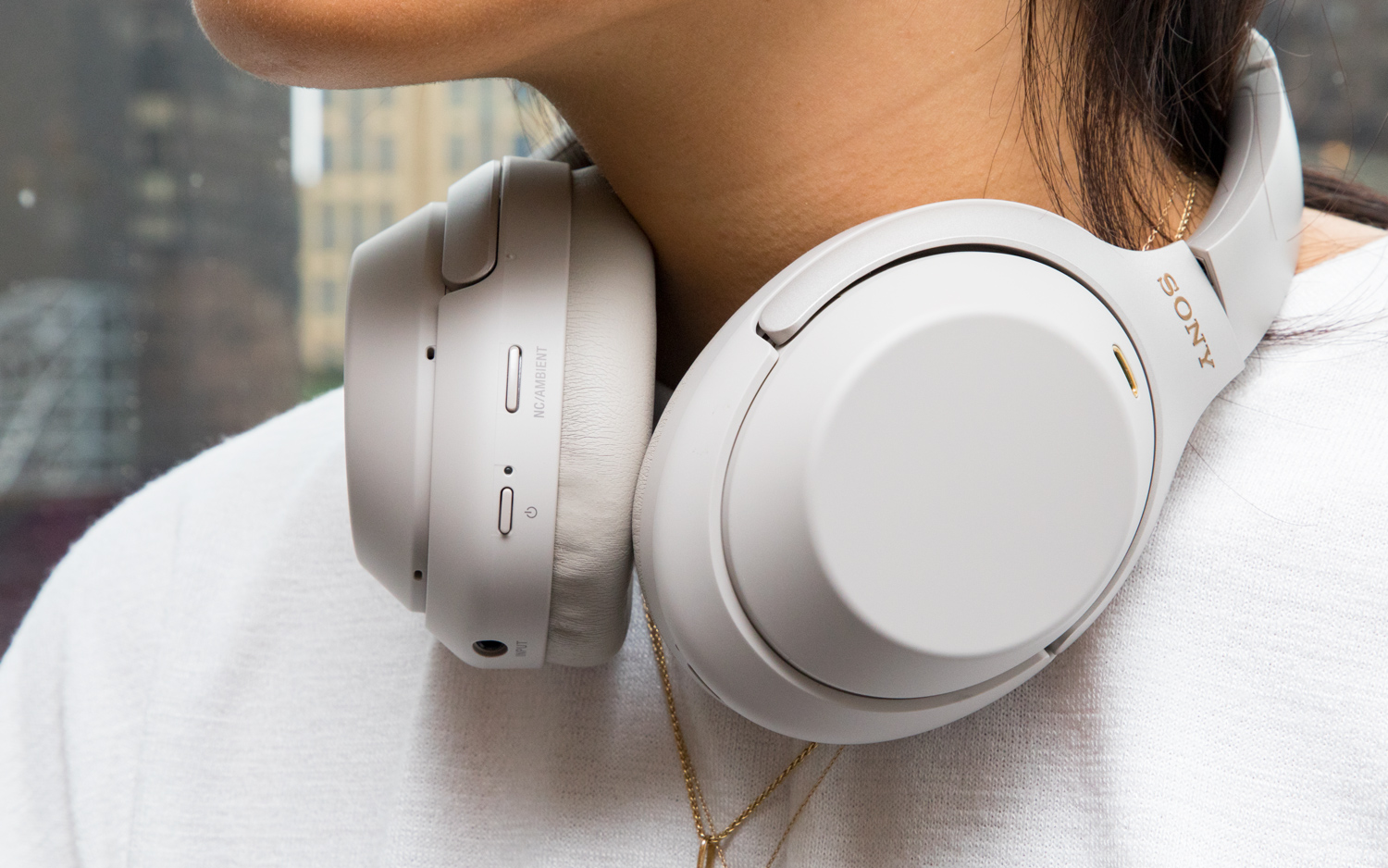
While not as ultramodern, the QC35 II takes on the series' signature control scheme, which sits on the right side. On the ear cup is a power/pairing switch that offers a strong recoil when pressed. The right rear is where you'll find the volume and play/pause buttons, while the left ear cup hosts the new dedicated Action button to enable noise-cancelling modes.
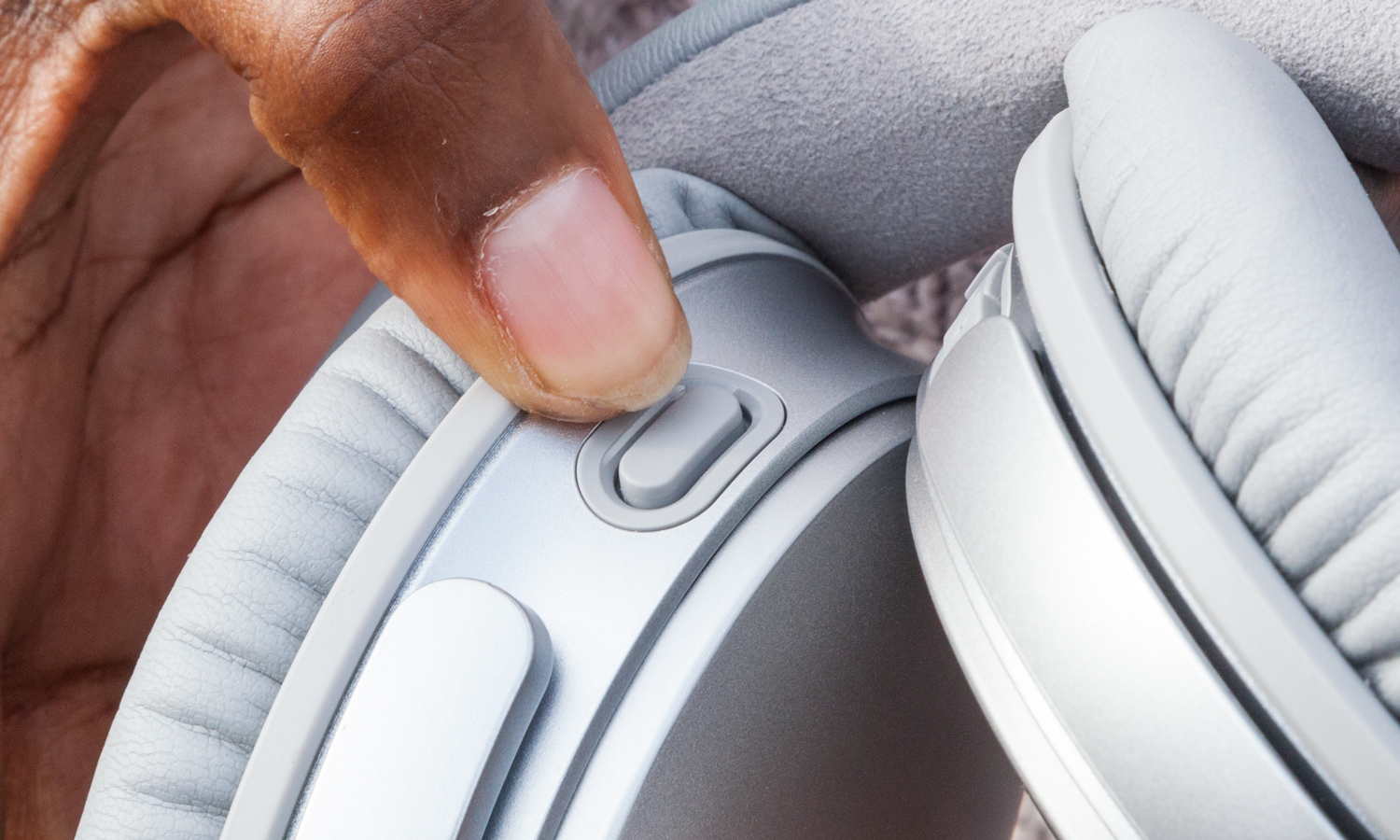
The button layout does make functionality easy, and the tactility on each button is superb, but the touch controls on Sony's cans are too impressive to overlook.
Winner: Sony WH-1000xM3
Bose QC 35 II vs Sony WH-1000xM3: Setup
Pairing either headphone to a device is simple and can be done in three ways: connecting via Bluetooth, downloading the accompanying app, or using NFC by tapping your compatible smartphone against the right ear cup. It saves time to do it directly from the app and allows you to personalize the QC35 II or WH-1000xM3 for enhanced listening. I did find the pairing process faster and more reliable on the QC35 II due to the Sony app's consistent crashing. The Bose Connect app also does a better job of picking up connection signals.
Winner: Bose QC35 II
WH-1000xM3 vs QC 35 II: Active Noise Cancellation
There's no denying that each headphone delivers premium ANC performance. Sony's made some significant strides with its noise-cancellation technology, and it shows in the WH-1000xM3. However, these improvements are outmatched by the QC35 II's greatest hallmark.
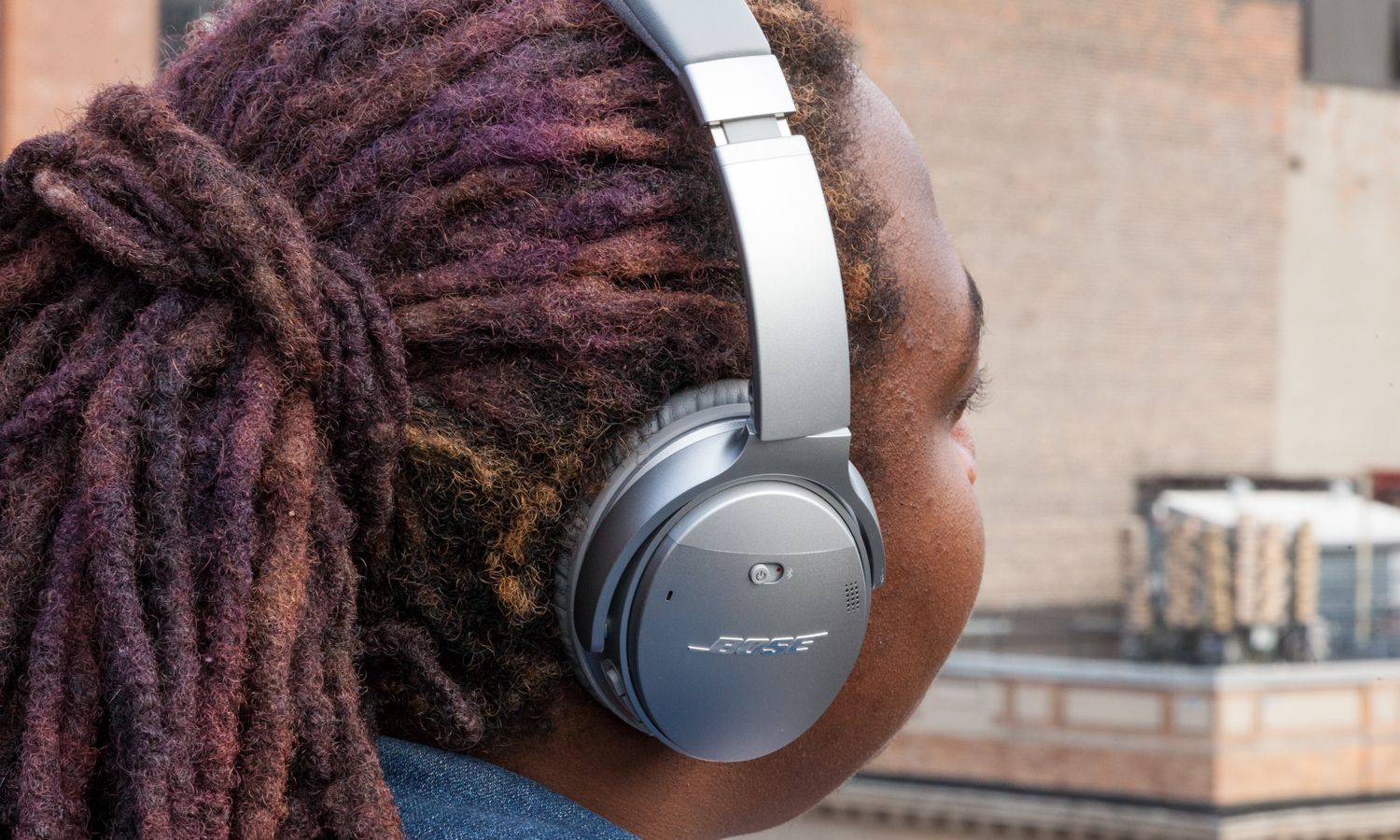
Bose programmed the QC35 II with two different noise-cancelling modes: Low and High. Both are remarkably effective and suited for different listening occasions, as Low tweaks the noise-cancelling levels in quieter or windy environments, while High takes it to the max and optimizes audio. The latter mode remains the preferable choice, blocking out everything without compromising audio. You can ride a plane or walk through the Village Halloween parade with these babies on and not be distracted by environmental fracas.
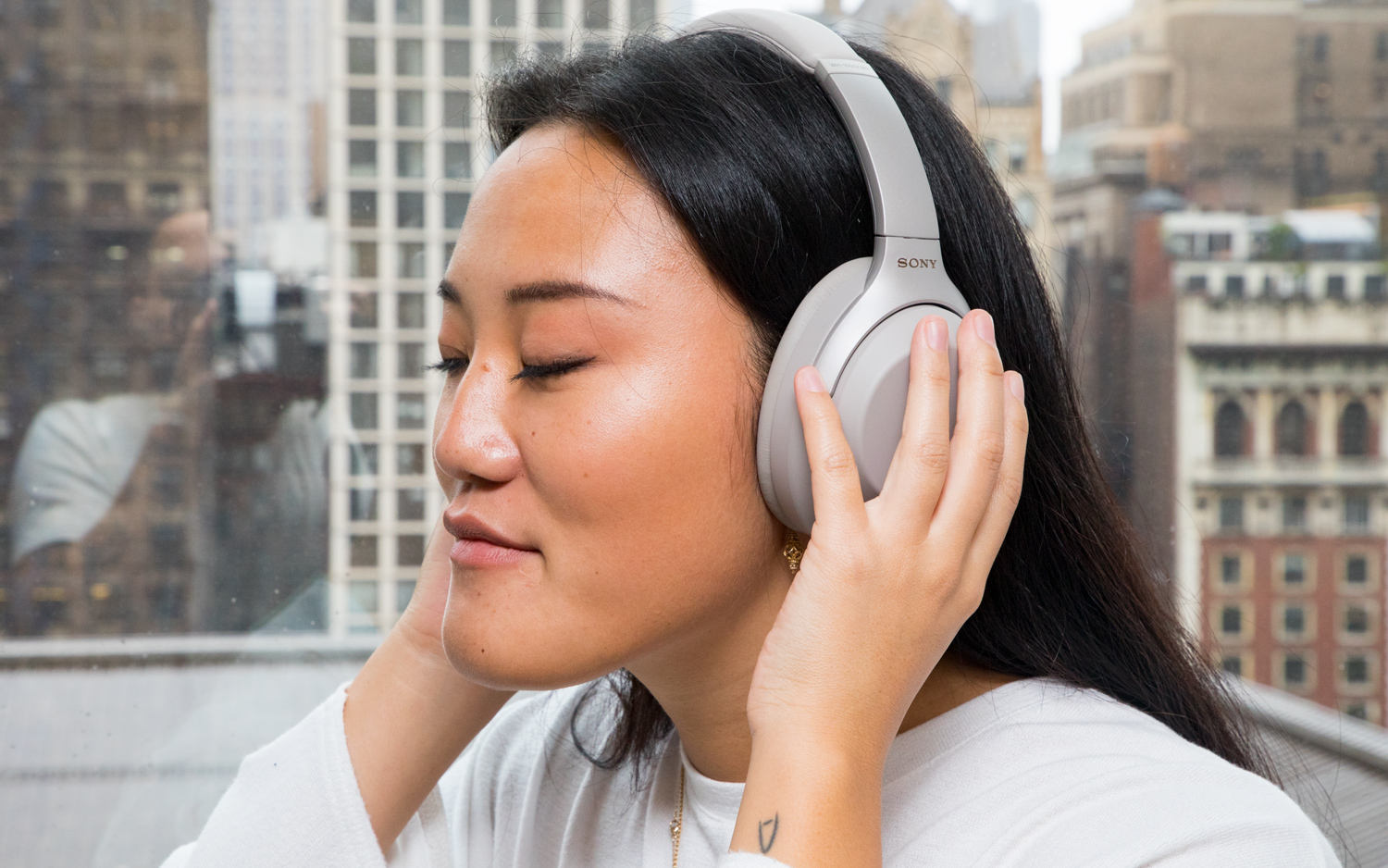
The WH-1000xM3 does a solid job of replacing ambient noise with amazing sound quality – just not as thoroughly. The headphones are powerful enough to hush loud TVs, rowdy pedestrians and train engines, while also letting in just the right amount of sound to hear what’s transpiring around you via Ambient Noise mode. Unfortunately, wind proves to be its Kryptonite, as outdoor drafts and passing winds hinder the sound quality.
Winner: Bose QC35 II
Sony WH-1000xM3 vs Bose QC 35 II: Audio performance
Sony knows sound just like Bose knows noise cancellation, so it should come as no surprise who the victor is this round.
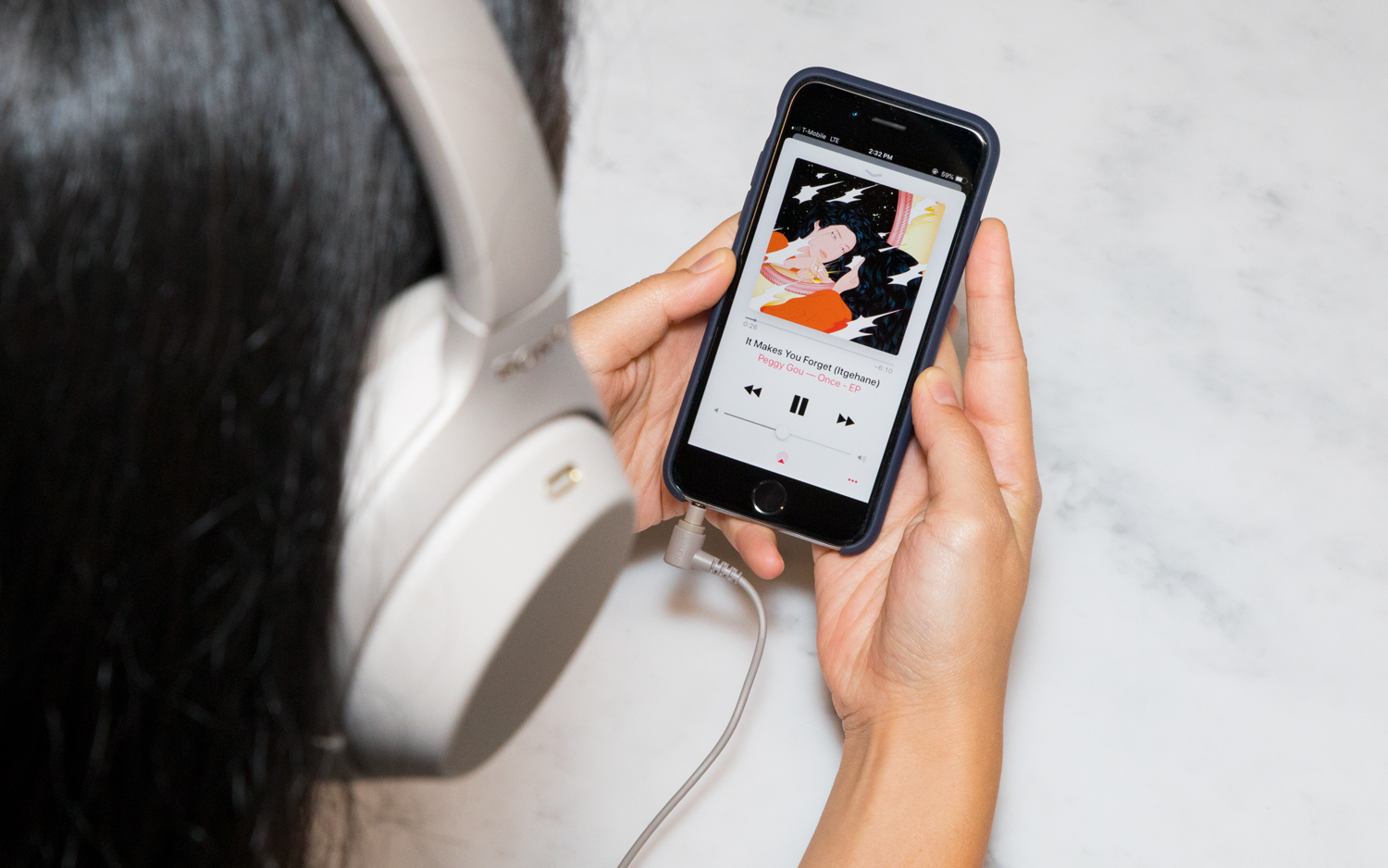
The WH-1000xM3 boasts a detailed and open soundstage that lets instruments and vocals breathe on every record. Sony's signature bass profile, along with the all-new QN1 processor, enhances fidelity and reduces distortion for cleaner, harder-hitting audio. These headphones definitely don't skimp on the low end and pack serious oomph that's most felt when listening to bass-heavy content. Live music recordings sound airy and immersive as well. Mids and highs are slightly richer when compared with the QC35 II.
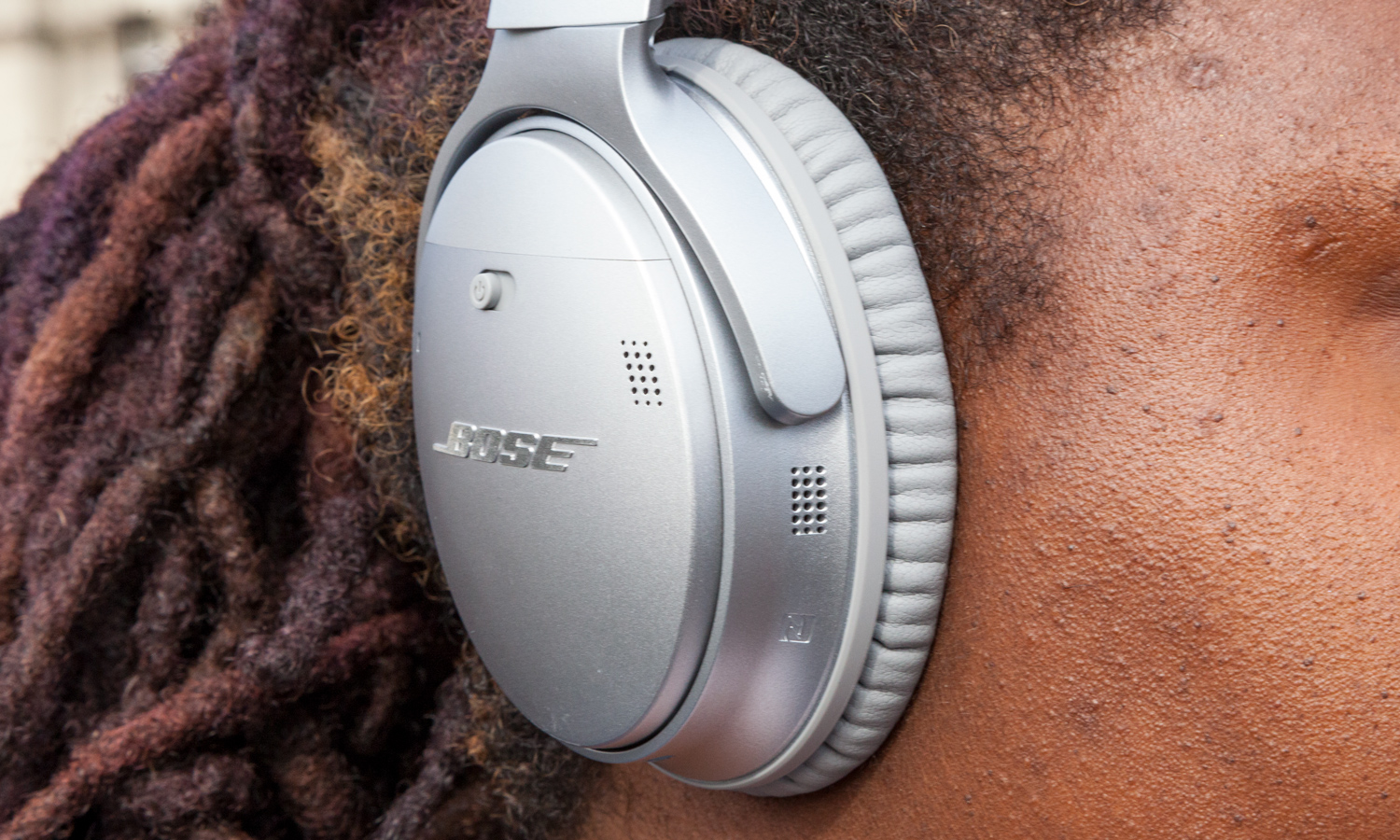
The QC35 II carries over the audio qualities of its predecessor, which results in crisp, wide sound. Highs and mids are handled well to create plenty of balance. You'll be able to pick up on such distinct sounds as cymbal crashes and high-pitched synths. Bass still dominates much of the sound profile, presenting impactful lows that don't sound muddled but still lack depth. Astute listeners might notice some unevenness in treble, too.
MORE: We rank the best wireless headphones
An auxiliary cable comes bundled with both headphones, which increases the volume a notch on the QC35 II and higher still on the WH-1000xM3. Sony's headphones produce sharper clarity in wired mode.
Winner: Sony WH-1000xM3
Sony WH-1000xM3 vs Bose QC 35 II: Apps
Each pair of headphones has its own companion app that offers multiple ways to enhance the listening experience. Bose Connect and Sony Headphones Connect allow for adjusting the active noise-cancelling, auto-off timers and playback controls. However, Sony provides more utilities, such as room effects and multiple sound-customization settings.
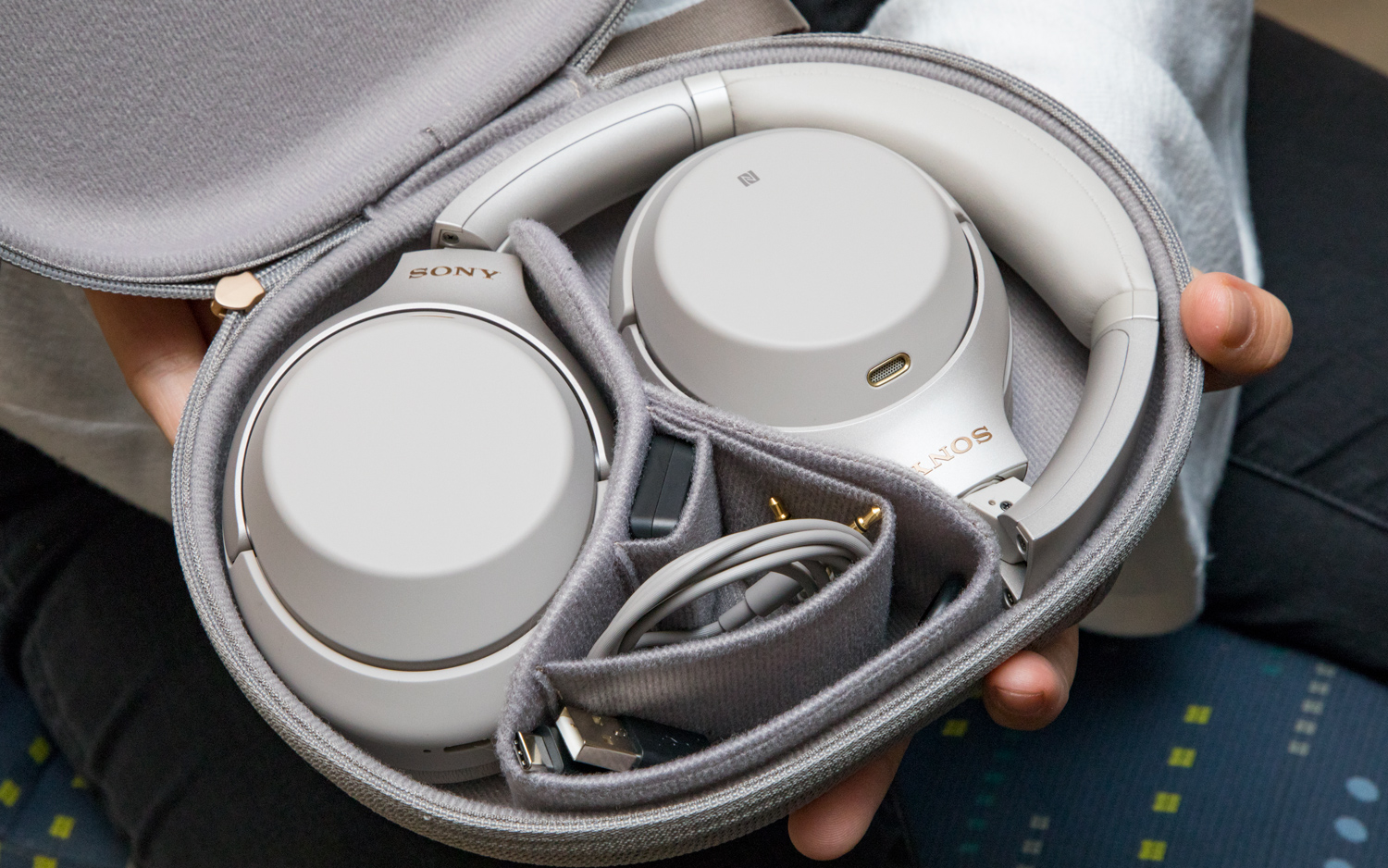
Calibrating noise cancellation through Sony Headphones Connect is easier and more intuitive. Features like Adaptive Sound Control and NC Optimizer do all the work by analyzing your movements and settings to advance noise neutralization. Being able to emphasize sound in different positions using Sound Position Control is another cool way of personalizing output.
Bose Connect might lack an equalizer, but it has other unique functions such as Music Share to let you stream music to two pairs of Bose headphones, along with firmware support for future updates. That still isn't enough to compete with Sony's app.
Winner: Sony WH-1000xM3
WH-1000xM3 vs QC 35 II: Digital assistant support
Bose and Sony have embraced the digital assistant trend and integrated Google Assistant into their headsets. While Google's AI bot runs smoother on the WH-1000xM3, the QC35 II supports more platforms, including Alexa. Siri is also accessible on each pair, but it's not built-in.

Pressing the QC35 II's dedicated Action button instantly fires up Google Assistant with the slightest touch. Bose's built-in mics help register commands and vocals in loud environments, which can be attributed to Bose's unbeatable noise-neutralizing circuitry. Updating the headphones to version 6.2.2 and downloading the latest firmware earns you Alexa support.
MORE: Browse the best Alexa skills
Google Assistant functions similarly on the WH-1000xM3; press the listening mode button to hear your latest mobile notifications and hold it down to activate the feature. Command response is quicker on Sony's headphones, although the QC35 II gains the edge for having Alexa at its disposal.
Winner: Bose QC35 II
Sony WH-1000xM3 vs Bose QC 35 II: Connectivity
It's disappointing to see that neither pair of headphones supports Bluetooth 5.0. The QC35 II and WH-1000xM3 operate on Bluetooth 4.1 and 4.2, respectively. Range is set at 30 feet for each device. Based on pairing and reliability, Bose wins this round.
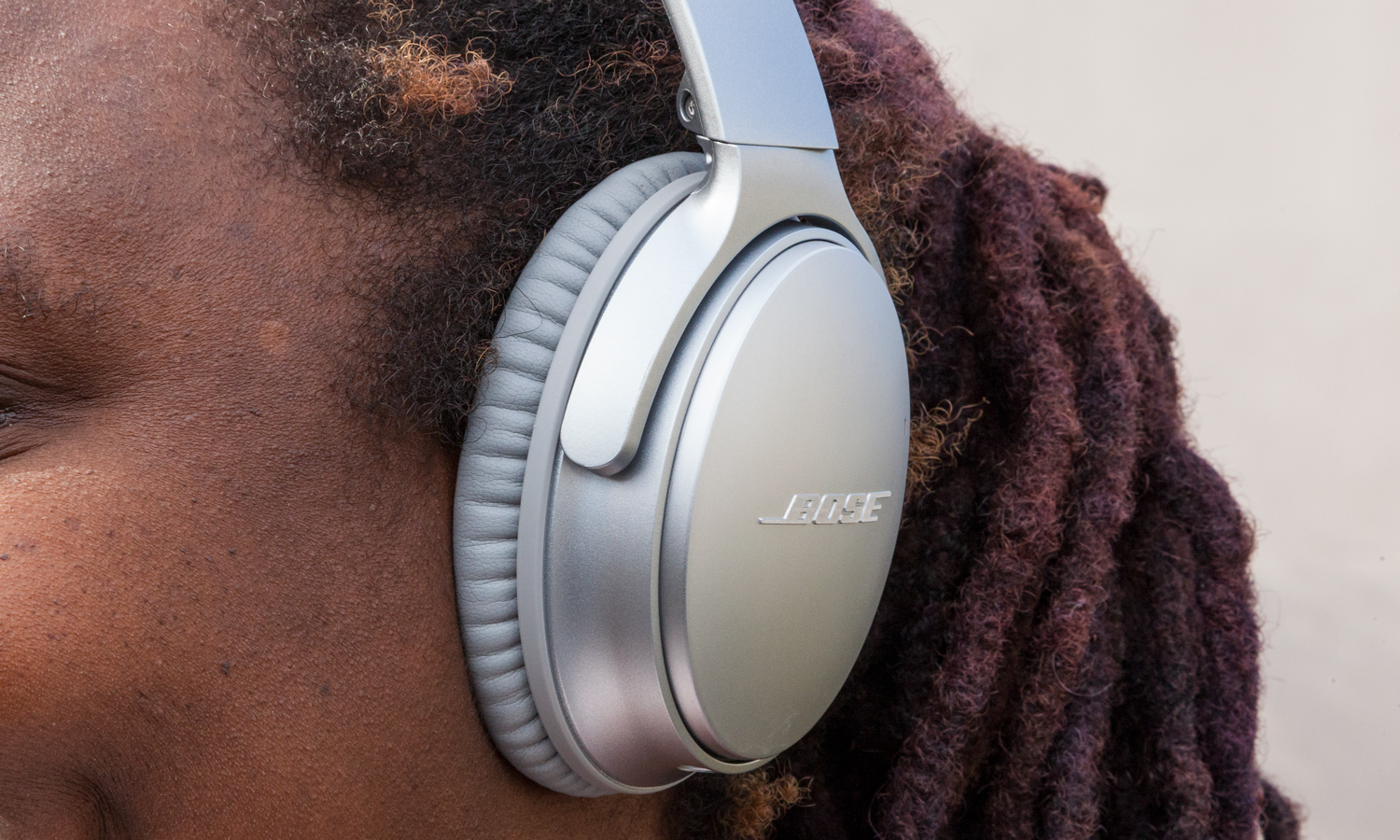
The QC35 II's power switch automatically puts them in pair mode and connects them instantly to your last synced device. Being able to pair to two devices simultaneously is a cool bonus. Media streaming runs smoothly on laptops and smartphones. On occasion, the headphones will extend connectivity past its standard range and get up to 35 feet without any interference.
MORE: Explore the best wireless earbuds
The WH-1000xM3 does offer steady connectivity, but also drops in range; interference is noticeable around the 25-foot mark. Latency is another issue, as you'll notice lag in sound when starting videos.
Winner: Bose QC35 II
Sony WH-1000xM3 vs Bose QC 35 II: Battery life
What sounds better: 20 of playtime, or 30 hours? Therein lies the difference in battery life between the two headphones, with Sony leading the charge. No pun intended.
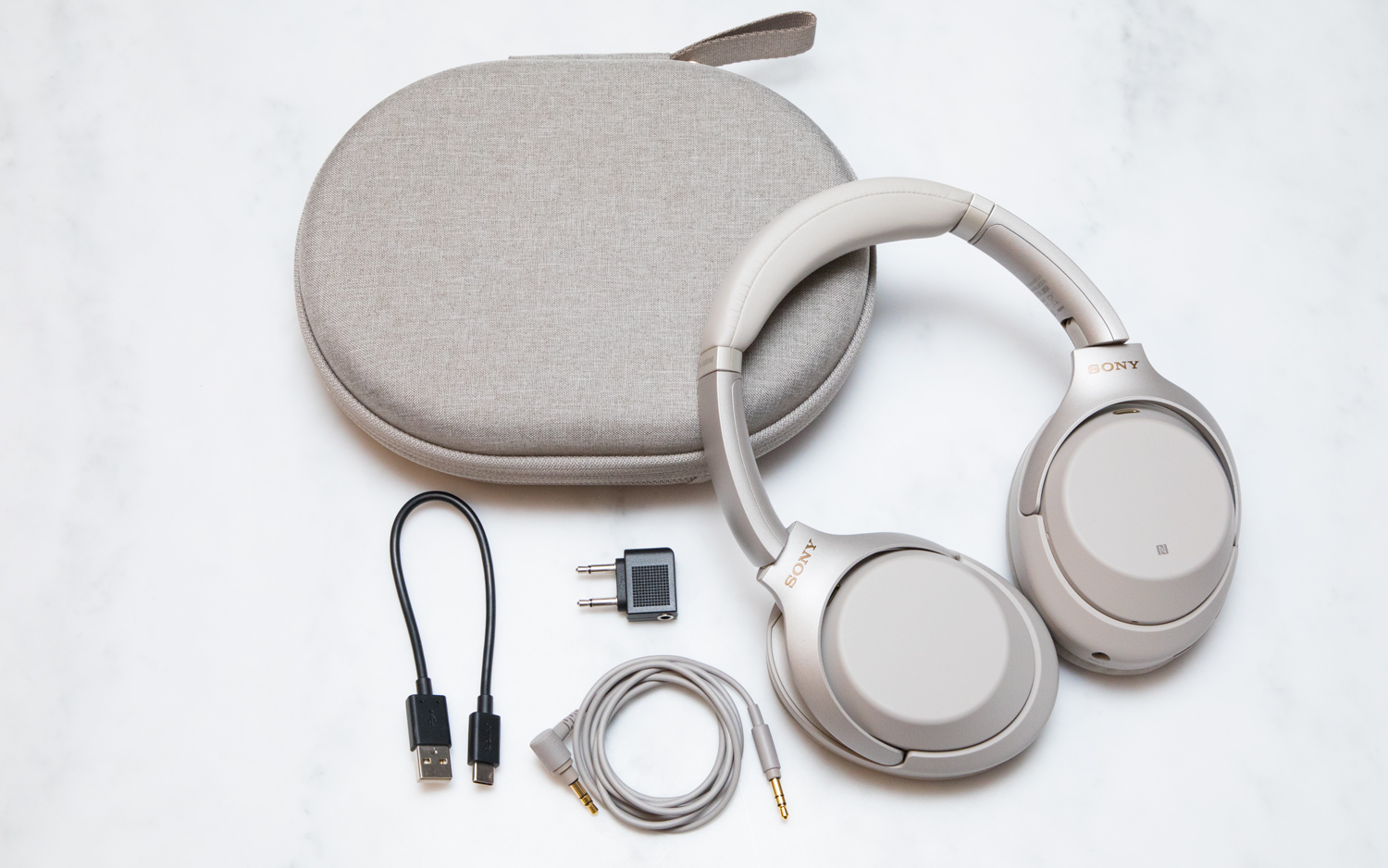
The WH-1000xM3 has a massive rechargeable battery that permits 27 hours of listening time on NC mode, at best. That translates to about 6.5 hours daily for four days of use. Playing music at high volumes and wireless calling can affect performance. Having USB-C integration is huge and generates quicker charges. Five hours of play-time can be achieved on a 5-minute charge, whereas a full battery takes somewhere between 2.5 and 3 hours. The headphones have a sleep function as well to preserve juice when inactive.
Bose' headphones surpass their advertised length in use, generating about 22 hours of playtime, which is surprising, but still shorter. However, you can get 40 hours when disabling noise-cancelling and Active EQ. The QC35 II requires only 2 hours for a full battery, and quick-charging support allows for 2.5 hours on a 15-minute charge. The headphones also have a timer function to put the headphones into sleep mode.
Winner: Sony WH-1000xM3
Sony WH-1000xM3 vs Bose QC 35 II: Call quality
The QC 35 II's built-in mics do a fine job of blocking ambient noise and producing clear vocals. Whether you're at home or walking outside in drafty conditions, call quality remains solid. Most callers had the impression I was speaking directly into my smartphone.
I don't recommend taking calls on the WH-1000xM3, as the mics struggle with background interference, especially wind. Volume is low and voices sound even lower, making calls nearly inaudible.
Winner: Bose QC35 II
Sony WH-1000xM3 vs Bose QC 35 II: Value
On top of sharing similarities in performance, the QC35 II and WH-1000xM3 have the same RRP price tag. Below are the best prices in your region right now.
On paper, the WH-1000xM3 looks to offer more bang for your buck. We're talking class-leading audio, killer battery life, smart controls, stellar noise cancellation and one of the coolest sound-customization apps out. However, noise cancellation is the name of the game, and the QC35 II is a master at it, while also delivering the goods in other areas.
Winner: Sony WH-1000xM3
WH-1000xM3 vs QC 35 II: Bottom line
| Row 0 - Cell 0 | Bose QuietComfort 35 II | Sony WH-1000xM3 |
| Design (10) | ✔️ | Row 1 - Cell 2 |
| Controls (5) | Row 2 - Cell 1 | ✔️ |
| Setup (5) | ✔️ | Row 3 - Cell 2 |
| Active Noise-Cancelling (20) | ✔️ | Row 4 - Cell 2 |
| Sound Quality (20) | Row 5 - Cell 1 | ✔️ |
| Apps (5) | Row 6 - Cell 1 | ✔️ |
| Battery Life (10) | Row 7 - Cell 1 | ✔️ |
| Digital Assistant Support (5) | ✔️ | Row 8 - Cell 2 |
| Connectivity (5) | ✔️ | Row 9 - Cell 2 |
| Call Quality (5) | ✔️ | Row 10 - Cell 2 |
| Value (5) | Row 11 - Cell 1 | ✔️ |
| Total Score | 50 | 45 |
The Bose QuietComfort 35 II and Sony WH-1000xM3 are two of the best-sounding, most feature-rich headphones money can buy. With that said, the victory goes to Bose for outperforming Sony in the one category that matters most here: noise cancellation.
Now, don't get me wrong – the WH-1000xM3 is an astounding pair of sound-silencers. Sony has made its noise-cancelling technology so adaptive and neutralized that listeners can enjoy the headphones' dynamic soundstage on any sound profile. The Bose QC35 II just happens to beat it in more categories and has the better noise-cancelling experience.
Choosing between the two is still a win-win scenario, as the decision comes down to personal preference. Naturally, if class-leading sound takes precedence over everything else, add the WH-1000xM3 to your wish list. If having the best noise cancellation in the business means more to you, then stock your cart with the QC35 II, ASAP.
Credit: Tom's Guide
Sign up to get the BEST of Tom's Guide direct to your inbox.
Get instant access to breaking news, the hottest reviews, great deals and helpful tips.
A lifestyle journalist with an affinity for consumer products, Alex has over a decade of experience and has worked with popular publications such as Complex, Thrillist, Men’s Health, Gear Patrol, AskMen, and Hoop Magazine. He currently focuses on audio, reviewing the most coveted headphones in the market for both Tom’s Guide and Laptop Magazine.
-
falagund Connectivity (5) how can the Bose win when it doesn't support AptX or LDAC (or even Aptx HD)Reply -
bernnelsen Reply
This is the only review that has the Bose as a better performer. I have to question the validity of this review because lets start with the colors listed. They are listed in reverse and the whole review is the polar opposite of every other review I have read. I take issue with the noise cancelling of the Bose being better. I have both sets of phones and the Sony is hands down the best.21481997 said:Connectivity (5) how can the Bose win when it doesn't support AptX or LDAC (or even Aptx HD)
-
bernnelsen this review is very questionable to me. Several reasonsReply
1. the list of colors in the chart are opposite.
2. all top sites including audiophile sites say that Sony finally beat out Bose as the leader in noise cancellation.
3. this review contradicts all of the testing as far as battery life is concerned, Sony is better by far
4. the specs and points of each headphone is the opposite of the research available.
I have always been a trusted Toms reader and have taken his word as a top recommendation, this review brings credibility into question -
w0qj Many Sony WH-1000xM3 units are dropping like flies and is unusable in cold weather; its touch panel is disabled/unusable under 5 degrees Celsius, and standing outisde in cold weather they will consistently register random swipes (even though nothing has touched the headphones) under 10 degrees Celsius!Reply
https://community.sony.co.uk/t5/portable-audio/sony-wh-1000xm3-muting-in-the-cold/td-p/2534059/highlight/false?language=en_US -
Prizm4 I really wanted to like the Sonys but they were just too uncomfortable. And by uncomfortable, I'm talking about the suction/vacuum effect when you put them on. It's something to do with the noise cancellation. I had to sell my Sony 1000-XM2 because the air pressure sensation around my ears was too uncomfortable. I felt like I had to lift the earpads off my ears now and again to relieve the pressure.Reply
I tried the new 1000-XM3 headphones and I did notice that they were more physically comfortable around the head (they felt less weighty and didn't seem to clamp as hard as the XM2's), but after a few minutes of testing I noticed the suction/vacuum effect was still too strong for me.
Go to a store and try the XM3s. Put them on, take them off, and repeat. When you lift the earpads off, you will probably notice the suction effect I'm talking about. For some people this does not seem to be an issue, but I personally found it uncomfortable for any decent length of time.
I swapped back and forth between the Sony XM3 and the Bose QC35 II, and every time I put the Bose on, I noticed it had much less of an air pressure effect and they were just overall more comfortable. So reluctantly, I decided not to go with the Sony XM3. -
wynkoop2000 I completely disagree with this article. I've used both headphones. In reality, I wonder if the reviewer mixed the two up, as my conclusions are almost opposite!Reply
Sony XM3
- Better ANC
- Lots of cool tech features
- Overwhelming bass (not in a good way)
- Overall sound signature is muffled
Bose QC35ii
- much more crisp/clear sound
- Excellent noise cancelling (just not as good as Sony)
- Limited tech features
Honestly, the sound quality of the Sony XM3 really turned me off. As for their advantage on quality of noise cancellation, that only matters if you want silence (no music). The second I played music through the QC35ii I couldn't hear a thing around me. -
bradjjones11 @WYNKOOP2000 I totally agree with you there. I have the Bose right now after breaking my Sony M3s, but my brother has a pair which gave me a fair head to head. The Bose, in my opinion, has the better sound quality, despite not having the codecs that Sony does such as LDAC.Reply
In terms of ANC, they are very very close, but I'd say the Sony's take the trophy here. Battery is also 100% better on the Sony's with about a third extra play time. Tech features are another feature that the Sonys excel at too.
However, with all that said, I still prefer my recently purchased Bose QC35IIs as the sound is unrivalled. The Sony headphones are on the bassy side which muddy the experience for me, it doesn't sound natural like on the Bose. Also, the highs are too sharp on the Sonys and mids are always being drowned out by either the bass or highs to the extent that I felt like hearing some songs for the first time again on my Bose headphones.
Long story short:
Bose = sound QUALITY and good ANC
Sony = Even BETTER ANC, Better battery life and techy features -
fry178 lol, the bose arent even Hi-Res certified (last time i checked) nor have LDAC allowing 990kbit with flac/uncompressed files.Reply
and now one buys these for range on wireless. and most would prefer SQ over getting couple feet more.
not even talking about the fact the bose are done when they run out of juice, the sonys still work plugged in.
@wynkoop2000did you try the Xbass slider/EQ in app? i know they can sound proper with some tweaking.
sure they wont come close to sennheiser/beyerdynamics and the like that cost the same, but those dont have NC. -
aliasjunto https://www.tomsguide.com/us/bose-qc-35-ii-vs-sony-wh-1000x-m3,review-5909.htmlReply
In the article, a chart categorizes Sony as having more color schemes, while the article content states it is the Bose headset with more. Which one is it? -
helpstar The Bose can be customizedReply
https://www.bose.com/en_us/products/headphones/over_ear_headphones/quietcomfort-35-ii-wireless-custom.html?EarCap=smo-gloss&EarCup=smo-gloss&InnerBand=smo-gloss&OuterBand=smo-gloss&Spacer=smo-gloss
the Sony only has two colors, black and silver
https://www.sony.com/electronics/headband-headphones/wh-1000xm3/specifications
